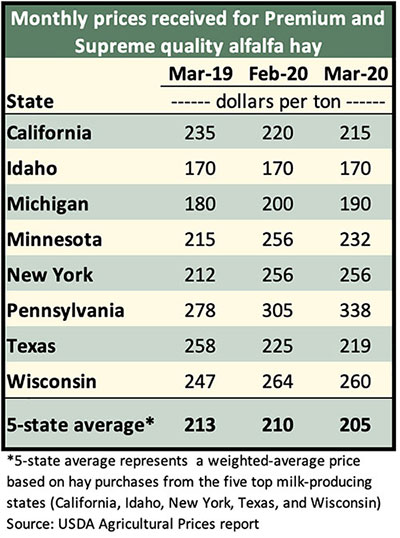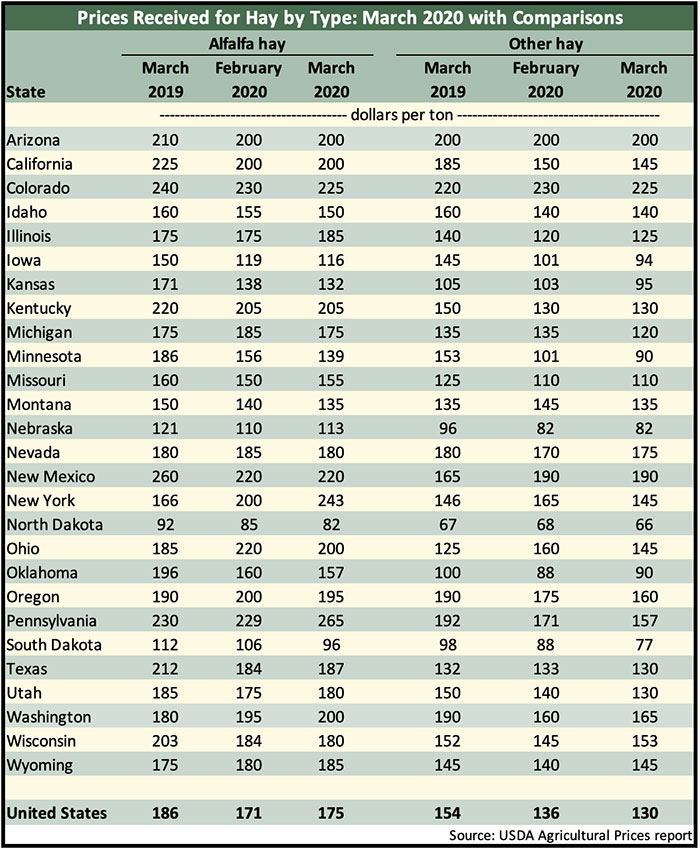Alfalfa price edges upwards during March |
| By Hay and Forage Grower |
|
|
|
The monthly U.S. average alfalfa price for March climbed $4 per ton from the previous month after remaining stagnant since the first of the year. The latest USDA Agricultural Prices report pegged alfalfa at $175 per ton, which was still $11 per ton lower than one year ago.  A couple of states posted significant price gains. New York was up by $43 per ton and Pennsylvania showed a $36 price jump. Illinois alfalfa hay averaged $10 per ton higher. Double-digit price decliners included Ohio – down $20 per ton, Minnesota – down $17, Michigan – down $10, and South Dakota – down $10. The highest average alfalfa hay prices were reported in Pennsylvania ($229 per ton), New York ($243), Colorado ($225), and New Mexico ($220). The lowest prices were posted in North Dakota ($82 per ton), South Dakota ($96), and Nebraska ($113). Keep in mind that the USDA average prices account for all qualities of hay sold. Also, the final U.S. estimate is a volume-weighted average rather than a simple average of state values. Those states with the most volume sales will impact the final U.S. dollar value more than those states with fewer sales. The USDA also tracks the prices of Premium and Supreme quality alfalfa in the major dairy states and determines an average price from the five leading milk-producing states. This data is being used to determine feed prices in the Dairy Margin Coverage (DMC) program. For March, the average price of Premium and Supreme alfalfa hay dropped by $5 per ton from February to $205 per ton, which was $8 below one year ago.  Other hay The March average price of other hay (mostly grass hay) dropped by $6 per ton from the previous month to $130, which was $24 per ton below March 2019. The highest prices for hay other than alfalfa were reported in Colorado ($225 per ton), Arizona ($200), and New Mexico ($190). States with the lowest reported other hay average prices included North Dakota ($66 per ton), South Dakota ($77), and Nebraska ($82). 
|
